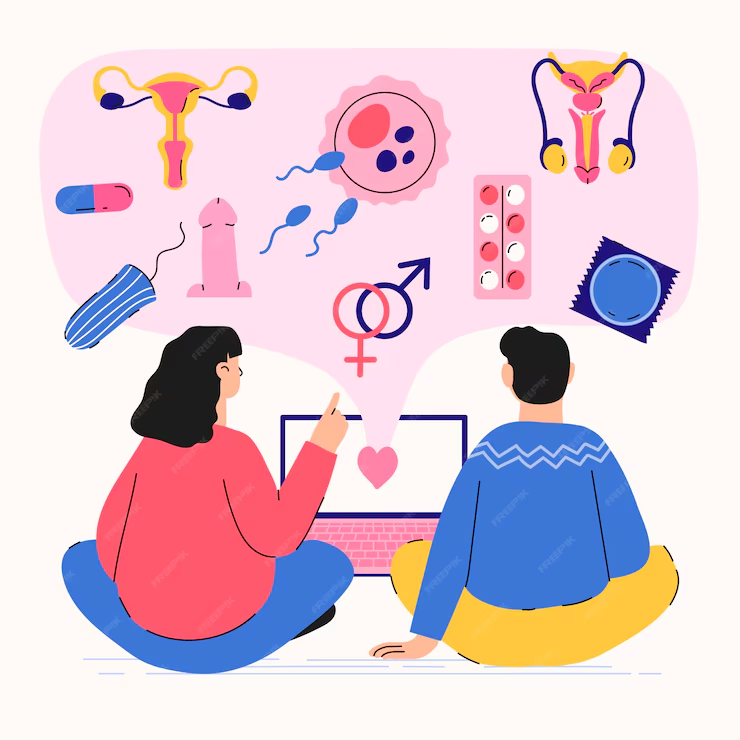Sex education is more than just a curriculum topic; it’s a vital aspect of societal growth and individual well-being. In today’s fast-paced world, where information is at our fingertips, the need for accurate and comprehensive sex education has never been more apparent. This post explores why sex education is crucial and how it shapes healthier, safer communities. We’ll also look into its evolution over time and discuss challenges and opportunities in delivering effective education on this sensitive subject.
Why Sex Education Matters: Health, Safety, and Empowerment
Comprehensive sex education equips individuals with the knowledge and skills necessary to make informed decisions about their bodies and relationships. By learning about the basics of anatomy, contraception, and reproductive health, students are empowered to protect their physical health. Additionally, sex education addresses topics like consent and healthy relationships, promoting emotional well-being and safety. Addressing these areas helps reduce instances of sexually transmitted infections (STIs) and unintended pregnancies while fostering respect and understanding among peers.
Sex education empowers individuals by providing them with the tools needed to communicate effectively about their needs and boundaries. This empowerment extends beyond interpersonal relationships and contributes to broader societal change by challenging stereotypes and reducing stigma around sexual health. Educating young people on these topics allows them to advocate for themselves and others, creating a more equitable and just society.
The Evolution of Sex Education: Past, Present, and Future
Sex education has undergone significant transformations over the years, evolving to meet the changing needs of society. Initially, sex education focused primarily on the biological aspects of reproduction, often neglecting the emotional and social dimensions. However, the past few decades have seen a shift towards a more comprehensive approach that includes topics such as consent, gender identity, and sexual orientation.
The present landscape of sex education varies widely across regions and cultures, with some areas offering progressive and inclusive curricula while others remain rooted in traditional and restrictive methods. The future of sex education will likely continue to evolve, driven by ongoing research and advocacy efforts that emphasize inclusivity and accessibility for all learners.
Innovations in technology and digital media also play a crucial role in shaping the future of sex education. Online platforms and interactive resources provide new opportunities for learners to access information and engage with content in diverse and personalized ways. By harnessing these tools, educators can reach a broader audience and ensure that sex education remains relevant and impactful in the years to come.
Common Myths and Misconceptions about Sex Education
Despite the growing recognition of its importance is still plagued by numerous myths and misconceptions. One common myth is that encourages early sexual activity among young people. However, research consistently shows that comprehensive actually delays the onset of sexual activity and promotes responsible decision-making.
Another misconception is that should only focus on abstinence. While abstinence is an important aspect of sexual health, solely promoting it fails to address the complex realities faced by young people. A comprehensive approach provides students with the knowledge and skills needed to make informed choices about their sexual health, regardless of their personal beliefs or circumstances.
There’s also a misconception that undermines parental values and authority. In reality, effective sex education programs actively involve parents and guardians, encouraging open communication and reinforcing family values. By working together, parents and educators can create a supportive environment that fosters healthy development and empowers young people to make informed decisions.
Key Components of Comprehensive Sex Education

Comprehensive encompasses a wide range of topics designed to promote overall well-being and informed decision-making. These programs typically include information on human anatomy and reproduction, contraception and pregnancy prevention, and sexually transmitted infections (STIs). Additionally, they address the emotional and social aspects of relationships, such as communication, consent, and boundary-setting.
A comprehensive approach also includes discussions on gender identity, sexual orientation, and diversity, fostering an inclusive environment that respects and celebrates differences. By addressing these topics, sex education helps to break down stereotypes and reduce stigma, promoting acceptance and understanding among students.
Finally, comprehensive sex education equips learners with critical thinking and problem-solving skills, empowering them to make informed decisions about their sexual health and relationships. By instilling these skills, students are better prepared to navigate the complexities of adolescence and adulthood, ultimately leading to healthier and more fulfilling lives.
Addressing Challenges in Providing Sex Education
Providing effective is not without its challenges. One of the main obstacles is the lack of standardized curricula and resources across different regions and cultures. This can result in inconsistent delivery of information and varying levels of access to quality education for students.
Another challenge is overcoming societal taboos and resistance to discussing topics related to sexuality and reproductive health. Addressing these taboos requires ongoing advocacy and collaboration among educators, policymakers, and community stakeholders to create an environment where open dialogue is encouraged and supported.
To address these challenges, it is essential to invest in educator training and professional development. Teachers must be equipped with the knowledge and skills needed to deliver comprehensive effectively. Additionally, engaging parents and communities in the educational process can help to build trust and foster a supportive environment for learners.
The Role of Parents, Schools, and Communities in Sex Education
Parents, schools, and communities each play a vital role in the delivery and success of n programs. Parents are often the first educators in a child’s life and can provide valuable guidance and support on topics related to sexual health and relationships. Encouraging open communication between parents and children helps to reinforce the information learned in formal education settings.
Schools are responsible for delivering age-appropriate and comprehensive sex education to students. By adopting inclusive curricula and providing ongoing training for educators, schools can create a safe and supportive learning environment that empowers students to make informed decisions about their sexual health.
Communities also have a crucial role to play in supporting sex education initiatives. Local organizations, healthcare providers, and advocacy groups can collaborate to provide resources and support for schools and families. By working together, communities can help to create a culture of openness and understanding around sexual health and relationships.
Resources for Accessing Reliable Sex Education Information

Access to accurate and reliable information is essential for effective sex education. Numerous resources are available to help educators, parents, and students stay informed and engaged with the latest research and best practices in the field. Online platforms, such as Planned Parenthood’s website and the Guttmacher Institute, offer comprehensive information on various topics related to sexual health and education.
Educational organizations, like SIECUS (Sexuality Information and Education Council of the United States), provide valuable resources and support for educators and advocates working to initiatives. Additionally, local healthcare providers and community organizations can offer workshops and informational sessions to support ongoing learning and engagement.
By leveraging these resources, individuals and communities can access the information and support needed to promote informed decision-making and healthy relationships. With the right tools and resources, sex education can empower individuals to take control of their sexual health and well-being.
Encouraging Open Dialogue and Lifelong Learning in Sex Education
In conclusion,
is a vital component of personal and societal growth that empowers individuals to make informed decisions about their sexual health and relationships. By addressing topics such as consent, gender identity, and diversity, comprehensive fosters a culture of acceptance and understanding.
To ensure the continued success of
initiatives, it is essential to address the challenges of inconsistent curricula and societal taboos. By investing in educator training and engaging parents and communities in the educational process, we can create a supportive environment for learners.







